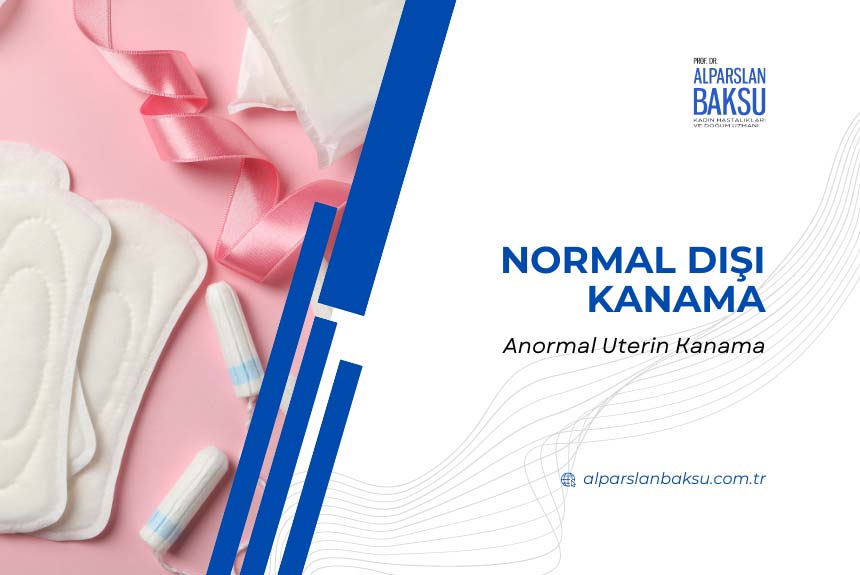UNNORMAL BLEEDING (ABORMAL UTERINE BLEEDING)
Normal menstrual bleeding comes every 25-35 days and lasts for 2-7 days. 60 ml during one menstrual period. amount of blood is lost. Bleeding outside this bleeding pattern is called 'abnormal bleeding (abnormal uterine bleeding)'. We can classify the types of abnormal bleeding as follows:
1. Frequent bleeding: Bleeding that occurs more frequently than 21 days
2. Infrequent bleeding: Menstrual bleeding that occurs less frequently than 35 days
3. Increased menstrual bleeding in duration and amount
4. Bleeding during non-menstrual periods
5. Heavy and irregular bleeding
What are the reasons?
We can collect the reasons under 3 headings;
1. Bleeding caused by an underlying disease:
a. Pregnancy-related causes: Miscarriage, ectopic pregnancy etc.
b. MyomaCauses that cause changes in the structure of the uterus, such as polyps
c. General diseases such as blood diseases, hormone disorders (goiter), kidney and liver failure.
2. Bleeding caused by medical treatments: IUD insertion, medications and hormone treatments given due to psychological problems (birth control pills and hormone therapy given after menopause).
3. Bleeding due to malfunction of the ovaries
The age of the woman who complains of abnormal bleeding gives clues about the cause of the bleeding.
a. Genital infections in children, foreign objects inserted into the vagina and early puberty disease (precocious puberty),
b. Irregular functioning of the ovaries and blood clotting disorders in teenage girls,
c. Pregnancy, ovarian dysfunction, myomas and polyps in women of childbearing age,
D. In post-menopausal women, endometrial atrophy (thinning of the uterine lining) and uterine cancer should be considered.
How is the diagnosis made?
1. First of all, a detailed bleeding history should be taken from the patient. This may give us some clues about the cause of the bleeding.
2. Laboratory examination: Blood count can give us information about the severity of bleeding. A woman of childbearing age should definitely have a blood pregnancy test (B-HCG) and a smear test if it has not been taken soon. If infection is suspected, discharge samples should be collected for culture. If a woman is thought to have a chronic disease, kidney and liver function tests, coagulation tests and hormone tests such as TSH, prolactin, FSH, LH should be performed.
3. An examination accompanied by ultrasonography will help diagnose many diseases such as myoma polyp and adenomyosis. Additionally, it can be evaluated by ultrasonography (saline infusion sonography), hysteroscopy and MRI.


4. In women over the age of 35 with abnormal bleeding, a tissue sample should be taken from the uterus and sent to pathology.

How is abnormal bleeding treated?
1. If a hormonal disorder is detected, appropriate drug treatment is given.
2. If there is a pregnancy-related problem; For example, ectopic pregnancy is treated with medication or surgery, and in case of miscarriage, the uterus is cleaned by curettage.
3. If there are structures such as myomas or polyps in the uterus, appropriate surgical methods are used (hysteroscopy, open surgery, etc.).

4. If there is thickening (hyperplasia) in the inner lining of the uterus, medication or hysterectomy treatments can be applied depending on the histopathological type, the age of the patient and the child's wishes.
5. If there is an infection in the lower genital tract, antibiotic treatment is given,
6. If cancer is found in the female organs (uterus, cervix and ovaries), surgery, radiation therapy (radiotherapy) or drug treatment (chemotherapy) is applied according to the stage of the disease.



Leave a Reply